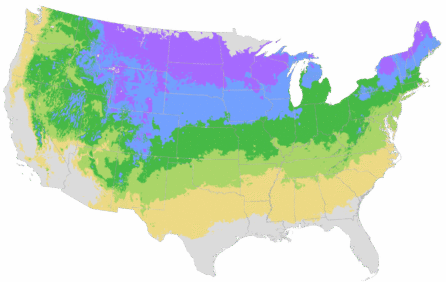You're growing in this Zip Code:
Change LocationDiscover Plants for Your Area
Prime-Ark® 45 Blackberry
Rubus x 'APF-45' PP #22,449
Retailers Near You
No Retailers found within 50 miles of your zipcode
Be Inspired: How to Use this Plant
| Bloom Time | Spring |
|---|---|
| Deciduous/Evergreen | Deciduous |
| Special Features | Showy Fruit, Edible, Benefits Birds |
| Growth Rate | Moderate |
| Flower Attributes | Showy Flowers |
| Patent Act | Asexual reproduction of plants protected by the Plant Patent Act is prohibited during the life of the patent. |
| Landscape Use | Barrier, Container, Espalier, Hedge |
| Flower Color | White |
| Foliage Color | Green |
| Companion Plants | Rosemary (Rosmarinus); Lavender (Lavandula); Yarrow (Achillea); Russian Sage (Perovskia); Salvia (Salvia) |
| Care Instructions | Provide fertile, mildly acidic, well-drained soil. Best in cool summer regions. Water deeply, regularly in first growing season to establish root system. Feed in early spring. After harvest, prune second-year canes that have fruited to the ground, leaving one-year-old canes to produce next season's crop. Train newer canes on a trellis. |
| Lore | Blackberries are notable for their high nutritional contents of dietary fiber, vitamin C, vitamin K, folic acid - a B vitamin, and the essential mineral, manganese. Blackberries are essentially divided into two groups - primocane-fruiting and floricane-fruiting. Primocane-fruiting varieties produce flowers and fruit on canes that mature within their first year. Conversely, floricane-fruiting varieties, that do not develop any flowers or fruit on those primocanes, but rather the primocanes would be the subsequent year's floricanes, that will produce the flower and fruit. Generally, primocanes produce their fruit later in the season. A mix of floricane and primocane-producing plants in the garden provides an early season crop and a late season crop, ensuring an extended season of fresh fruit. Primocanes can be more heat sensitive and will produce best in regions that do not have excessively hot temperatures during the flower and fruit set. |
| Bloom Time | Spring |
|---|---|
| Deciduous/Evergreen | Deciduous |
| Special Features | Showy Fruit, Edible, Benefits Birds |
| Growth Rate | Moderate |
| Flower Attributes | Showy Flowers |
| Patent Act | Asexual reproduction of plants protected by the Plant Patent Act is prohibited during the life of the patent. |
| Landscape Use | Barrier, Container, Espalier, Hedge |
|---|---|
| Flower Color | White |
| Foliage Color | Green |
| Companion Plants | Rosemary (Rosmarinus); Lavender (Lavandula); Yarrow (Achillea); Russian Sage (Perovskia); Salvia (Salvia) |
| Care Instructions | Provide fertile, mildly acidic, well-drained soil. Best in cool summer regions. Water deeply, regularly in first growing season to establish root system. Feed in early spring. After harvest, prune second-year canes that have fruited to the ground, leaving one-year-old canes to produce next season's crop. Train newer canes on a trellis. |
|---|
| Lore | Blackberries are notable for their high nutritional contents of dietary fiber, vitamin C, vitamin K, folic acid - a B vitamin, and the essential mineral, manganese. Blackberries are essentially divided into two groups - primocane-fruiting and floricane-fruiting. Primocane-fruiting varieties produce flowers and fruit on canes that mature within their first year. Conversely, floricane-fruiting varieties, that do not develop any flowers or fruit on those primocanes, but rather the primocanes would be the subsequent year's floricanes, that will produce the flower and fruit. Generally, primocanes produce their fruit later in the season. A mix of floricane and primocane-producing plants in the garden provides an early season crop and a late season crop, ensuring an extended season of fresh fruit. Primocanes can be more heat sensitive and will produce best in regions that do not have excessively hot temperatures during the flower and fruit set. |
|---|
Retailers Near You
No Retailers found within 50 miles of your zipcode
Retailers Near You
No Retailers found within 50 miles of your zipcode
Buy Online
This plant is not available to purchase online.
We no longer grow this plant. For replacement suggestions, check out the plants “You May Also Like” below.
About Us
We have been pioneers and craftsmen in the art of growing plants for nearly
100 years. Since our founding in Southern California by Harry E. Rosedale, Sr.
in 1926, we have been absolutely dedicated and obsessed with quality.
We have been pioneers and craftsmen in the art of growing plants for nearly 100 years. Since our founding in Southern California by Harry E. Rosedale, Sr. in 1926, we have been absolutely dedicated and obsessed with quality.





